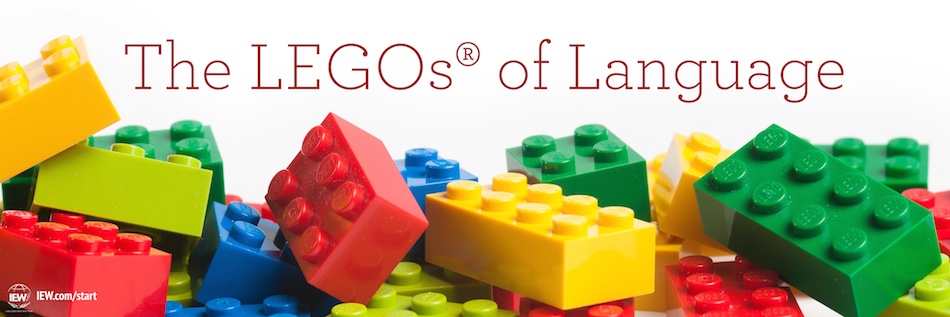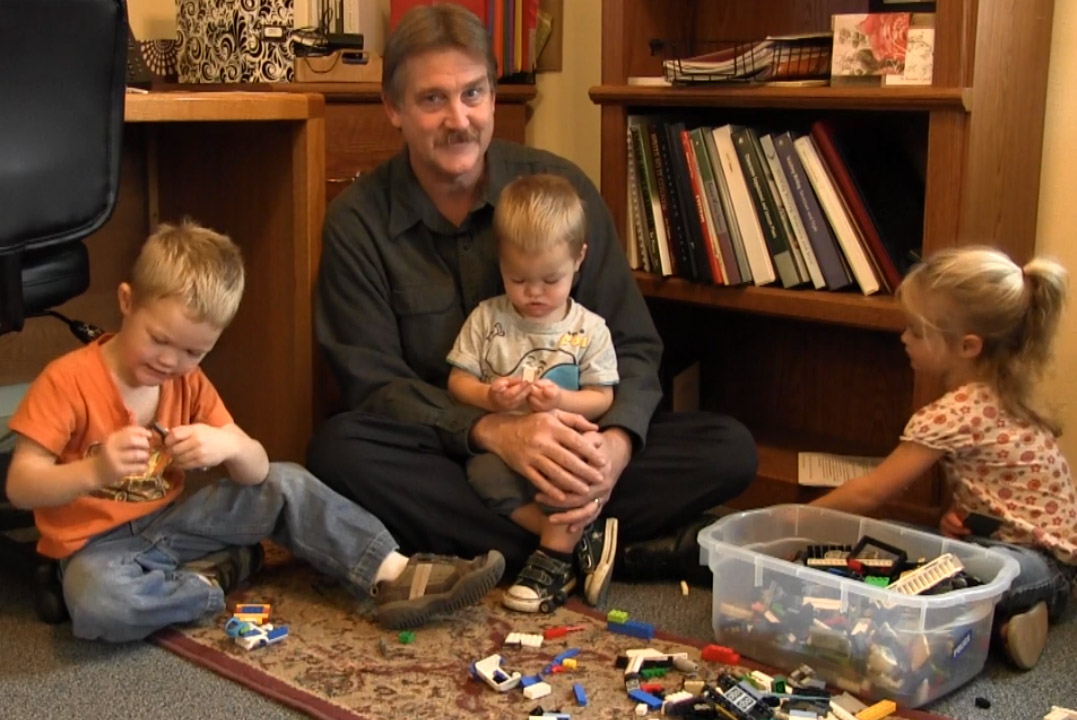
This week, for your enjoyment, we are revisiting a classic post from our archives. We hope you enjoy Andrew's thoughts on the LEGOs® of Language!
Most all children—especially boys—love to play with building toys, often for years (and then again as a young parent and once again as a grandparent). Undeniably, there’s something particularly satisfying about building with blocks, putting pieces together, and then appreciating one’s own creativity—whether tower, vehicle, or entire town. In my youth, my building toy of choice was Tinkertoy®s—once wood but now plastic—with the primary object of construction being science fiction weaponry (the all-powerful ray gun!). Today, LEGO® dominates the market, offering highly complex kits featuring detailed plans and super-specialty pieces. But simple or complex, wood or plastic, building toys have captivated many children of all generations. Why?

Andrew playing with his grandchildren
In contrast, one of my most hated classes in junior high school was art—specifically pottery. I simply could not make that blob of clay look like anything at all—let alone anything anyone would ever want to look at. I tried, but I could only produce unattractive, useless blobs. Although the teacher was encouraging, in my heart of hearts I knew the truth: Everything I made looked stupid and ugly. Overwhelmed with angst, I left that class inly swearing that no one would ever make me do pottery again. And to this day I refuse to play with clay.
So where’s the comparison here? For many students (and adults …), the creative writing experience is a bit like the pottery problem. “Make it up! It’ll be fun.” But it’s not. Kids may or may not be able to write down ideas from their imagination, but all too often it comes out disorganized, unfocused, inarticulate, and uninteresting. Blob-like. And the kids themselves know it, which creates a dissatisfying and frustrating experience they want to avoid in the future. Writing then becomes a hated part of schoolwork.
You see, without some coordinated pieces and a plan, it’s difficult to produce something of aesthetic or even practical value. The “creative” experience can be frustrating and not fun. However, if you give kids a variety of colorful pieces, proportionately shaped, along with some possible diagrams or illustrations for their use, creativity suddenly explodes!
Many parents and teachers I’ve met have observed that IEW’s Structure and Style approach to teaching writing is a bit like building with blocks. Provide the pieces—key words and style checklists, along with a model and a process to follow—and … voilà! Composition becomes less of a chore and more of a puzzle, a creative game, an achievable challenge.
This makes perfect sense (especially when we see transformed attitudes about writing), but occasionally we get the notion that somehow we’re “cheating” by giving them too much help. Don’t worry. By providing content to compose with and models to imitate, students are actually expanding their repertoire of ways to use language, much in the way that little builders are growing in their sense of form and function by using pieces pre-designed to promote purpose, symmetry, balance, integration.
So go ahead and give your students the “LEGOs® of Language” that IEW offers, and watch their creativity in writing sprout and grow strong. So many parents and teachers have come to me with this same analogy; I know it’s true. But I now have to go, because my almost-2-year-old grandson is pulling me away: “Grampa, play blocks, more blocks, come!” So I will go and build an awesome tower with him—because we have the pieces.
LEGO® is a registered trademark of the LEGO® Group.
TINKERTOY® is a registered trademark of Hasbro. Developed and distributed
by K'NEX Brands, L.L.C.
